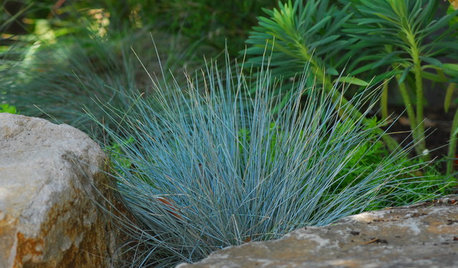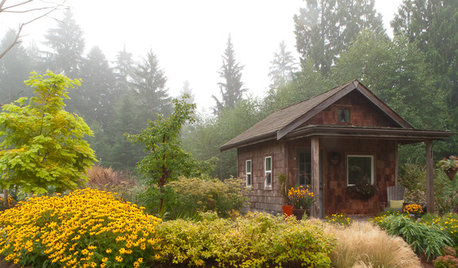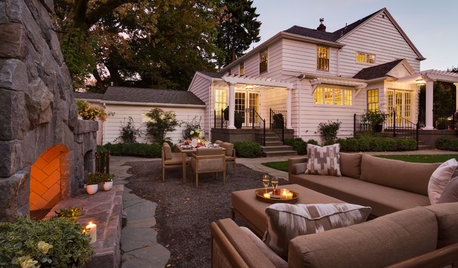Unwanted Grass
kathaab
18 years ago
Related Stories

GARDENING GUIDESGreat Design Plant: Purple Needle Grass, California’s State Grass
The long-lived, drought-tolerant Stipa pulchra is as admired for its benefits as for its good looks
Full Story
GARDENING GUIDES8 Spectacular Grasses to Energize a Fall Garden
Dancing in the autumn wind or flowing along a flower bed, these ornamental grasses bring wonderful movement and color to the landscape
Full Story
GRASSES10 Ways to Use Ornamental Grasses in the Landscape
These low-maintenance plants can add beauty, texture and privacy to any size garden
Full Story
INSPIRING GARDENSInside Houzz: A Waterfront Property Ditches the Grass for a Garden
New drought-tolerant plantings and outdoor gathering spaces help this California backyard take in the view without wasting space or water
Full Story
LANDSCAPE DESIGNGreat Design Plant: Blue Fescue
Is there anywhere this grass doesn't look great? Bonus: It outlasts other grasses in color and doesn't hog water
Full Story
LIFEHow to Keep Your Pets Safe During the Holidays
To avoid an unwanted trip to the vet, be aware of these holiday-related hazards for dogs and cats
Full Story
HOUZZ TOURSHouzz Tour: A Minnesota Home Is Loved Back to Life
An industrious family serves unwanted critters an eviction notice, turning their house from run-down to lived in and cherished
Full Story
MOST POPULARMeet a Lawn Alternative That Works Wonders
Carex can replace turfgrass in any spot, is low maintenance and adjusts easily. Add its good looks and you’ve got a ground cover winner
Full Story
PLANTING IDEASGreat Garden Combo: A Fall Landscape Scene That Lasts
Span the seasons with trees, shrubs and grasses that offer color and texture in abundance
Full Story
GARDENING AND LANDSCAPINGHouzz Survey: See What Homeowners Are Doing With Their Landscapes Now
Homeowners are busy putting in low-maintenance landscapes designed for outdoor living, according to the 2015 Houzz landscaping survey
Full Story





tapla (mid-Michigan, USDA z5b-6a)
meldy_nva
Related Professionals
Edmond Landscape Contractors · Bainbridge Island Landscape Contractors · Estelle Landscape Contractors · Fort Myers Landscape Contractors · Madera Landscape Contractors · Pueblo West Landscape Contractors · Vacaville Landscape Contractors · Houston Window Contractors · Doctor Phillips Window Contractors · Bloomington Window Contractors · Muncie Window Contractors · Muttontown Window Contractors · Tamiami Window Contractors · West Springfield Window Contractors · Fairland Window Contractorsrhizo_1 (North AL) zone 7
Kathaab_hotmail_com
Ina Plassa_travis
highalttransplant
meldy_nva
Jesus_is_1_hotmail_com
sylviatexas1
jrkuzara_comcast_net
blazeaglory